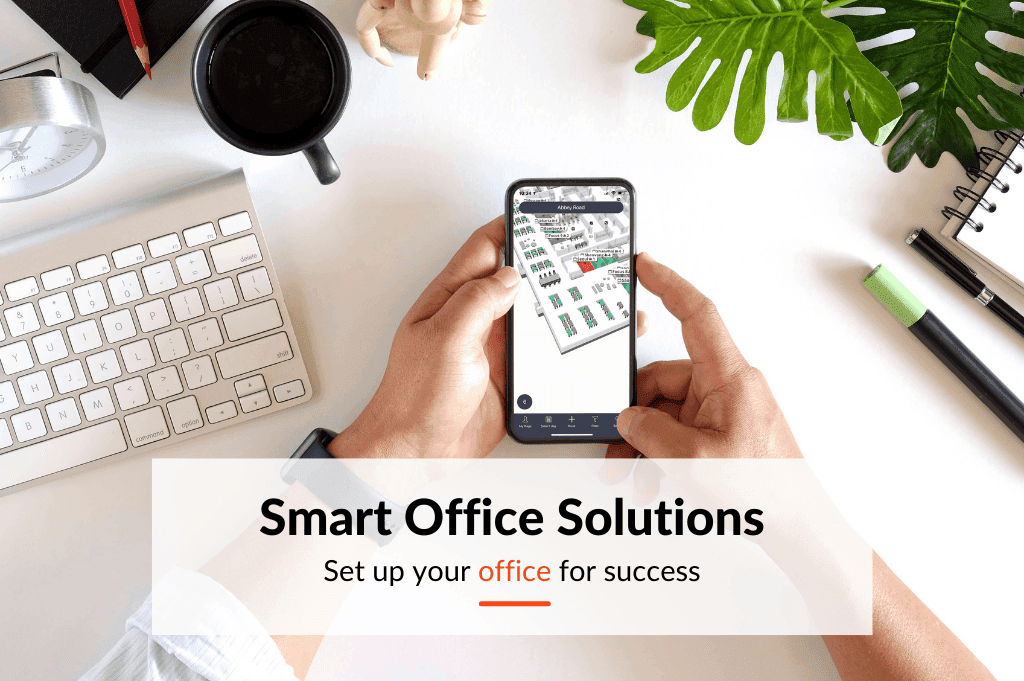The concept of “flexible working” evolved from a futuristic trend to concrete reality in 2020. The movement towards flexible working is now creating new opportunities for digital solutions that manage office resources and staff flows. Flowscape is one of the leading companies in the Smart Office segment and estimates that demand for SaaS-based office management solutions will see its largest increase ever in 2022 and 2023.
Flexible working has been a globally growing trend over the past decade and the pandemic
has rapidly accelerated this development. Recently, as many as 73% of business leaders answered that flexible work will be part of their long-term strategy after Covid-19 (1), which is a massive increase compared to just a few years ago. Employees also share this view and according to a study conducted in 2020, more than half of all office workers want to continue working from home two to three days a week (2).
“The customers we have contact with no longer see permanent workplaces as a sustainable and long-term strategy. Even if you want to keep the offices, the benefits of homework have made many people re-think. Today, almost everyone agrees that the offices need to be redesigned to meet the requirements and wishes that employees today place on flexibility", says Peter Reigo, CEO of Flowscape.
The pandemic has not only stirred interest in the concept of flexible working, but has also highlighted the possibility for companies to reduce office space and premises costs (1). Many have now realized that there are large sums to be saved on reduced space, and new surveys show that business leaders plan to reduce their office space by an average of 30% (3). Since office space, depending on location, usually costs SEK 50-250 thousand per employee per year, the move towards flexible workplaces can result in massive savings for companies worldwide.
In 2022 and 2023, reducing office space will thus be one of the companies' most important strategies for reducing costs and increasing competitiveness. To complete that journey, digital solutions are necessary. Software is needed to enable booking of workplaces and parking spaces, analyze office usage and to ensure that teams are in the same days of the week and can sit together. With the right solutions, it will be possible to optimize the use of the premises and at the same time create an efficient staff-flow.
“Smart Office solutions have in the past focused almost exclusively on large international companies with several offices. Recent studies on the subject indicate that the Smart Office segment will see a significant increase in demand in the upcoming years. Today we receive inquiries from small and medium-sized companies like never before, which gives us the opportunity to establish ourselves in new markets.” Says Peter Reigo, CEO of Flowscape.
Flowscape was one of the pioneers when they developed their Smart Office product in 2013 and has since then been one of the driving innovators in this market. Flowscape is one of the leading companies in the Nordic and European markets with a strong rate of expansion in the USA. At Flowscape's offices in Stockholm, Sofia, London and San Francisco, it is clear that the pandemic has only increased demand and the need for smart office solutions. However, the largest increase is expected to occur in 2022 and 2023 when the majority of offices around the world begin to review their office strategies for the future.
"We can already see that the pandemic has changed the perception of how offices should be used. This is a huge change that our industry can only benefit from. It is estimated that 20-25% of the global workforce can work from home 3-5 days a week (3), giving the Smart Office segment a growth potential of several billion dollars. Flowscape is well positioned in the European market and is expanding rapidly in the US and globally. If these current trends continue, we expect to see a large increase in orders and business in the coming years.” Says Peter Reigo, CEO of Flowscape.
Sources
(1) Barkham, R. o.a., 2020. 2020 GLOBAL OCCUPIER SENTIMENT SURVEY: The Future of the Office, u.o.: CBRE, INC. [Online] Available at: https://www.cbre.com/research-and-reports/The-Future-of-the-office-2020-Global-occupier-sentiment-survey [Used 19.07.2021]
(2) Smith, Y. R. & Samen, K. K., 2020. TIME TO TRANSFORM: Workplace Post-Covid 19: Trends, Predictions, Facts, u.o.: KKS Savills. [Online] Available at: https://pdf.savills.com/documents/KKS-Savills_Time-to-Transform.pdf [Used 19.07.2021]
(3) Lund, S. o.a., 2021. The future of work after COVID-19. [Online] Available at: https://www.mckinsey.com/featured-insights/future-of-work/the-future-of-work-after-covid-19 [Used 19.07.2021].
Download our Solution Suite Brochure!
Learn more about our solutions and products, and what it can do for your business.
